Automated PU Panel Production Line | Leading Factory
Unlocking Efficiency and Performance in Modern Construction with Advanced PU Sandwich Panel Machine Technology
The Evolving Landscape of Building Materials: Why Polyurethane Panels?
In an era where energy efficiency, speed of construction, and sustainable building practices are paramount, the demand for advanced building materials has skyrocketed. The global sandwich panel market, valued at approximately USD 1.8 Billion in 2023, is projected to grow at a CAGR of 6.7% from 2024 to 2030. This growth is largely driven by the exceptional properties of Polyurethane (PU) and Polyisocyanurate (PIR) sandwich panels. These panels, manufactured on a sophisticated pu panel production line, offer a unique combination of thermal insulation, structural rigidity, and fire resistance, making them the material of choice for a vast range of applications.
From state-of-the-art cold storage facilities and sterile clean rooms to modern architectural facades and prefabricated housing, PU panels are at the forefront of innovation. Investing in a high-performance pu sandwich panel line is not just a capital expenditure; it's a strategic move towards capturing a significant share of this burgeoning market. This comprehensive guide will delve into every facet of the pu sandwich panel production line, focusing on the cutting-edge technology, key performance indicators, and the immense value proposition it offers to manufacturers.
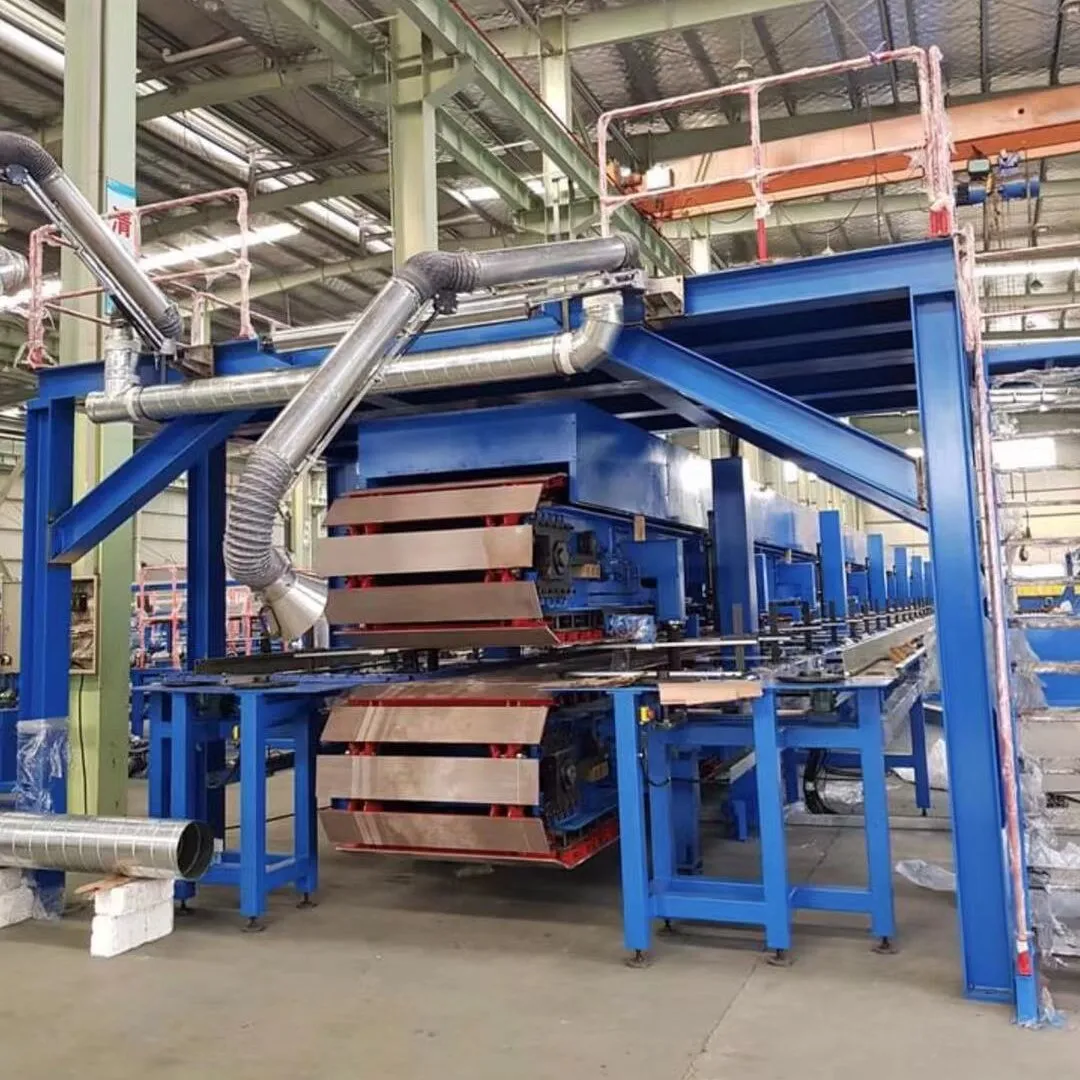
Deconstructing the Magic: The Manufacturing Process of a PU Panel Production Line
The transformation from raw steel coils and liquid chemicals into a high-performance building panel is a marvel of modern engineering. A continuous pu sandwich panel production line orchestrates this complex process with incredible precision. Below is a detailed breakdown of the key stages, exemplifying the technology behind the YOWIN 24m Double Conveyor line.
Uncoiling & Roll Forming
The process begins with two decoilers feeding steel coils (typically PPGI, Galvanized, or Stainless Steel) into the line. These sheets pass through high-precision roll forming stations, where CNC-machined rollers shape the metal into the desired profiles for the panel's top and bottom surfaces. Precision here is critical for the panel's final dimensional accuracy and interlocking mechanism.
Pre-heating & Corona Treatment
Before the core material is introduced, the steel sheets are pre-heated to an optimal temperature (around 40-50°C). This ensures proper adhesion and reaction of the polyurethane foam. For certain applications, a Corona treatment is applied to the inner surface of the steel to increase surface energy, guaranteeing a superior bond between the metal and the foam core.
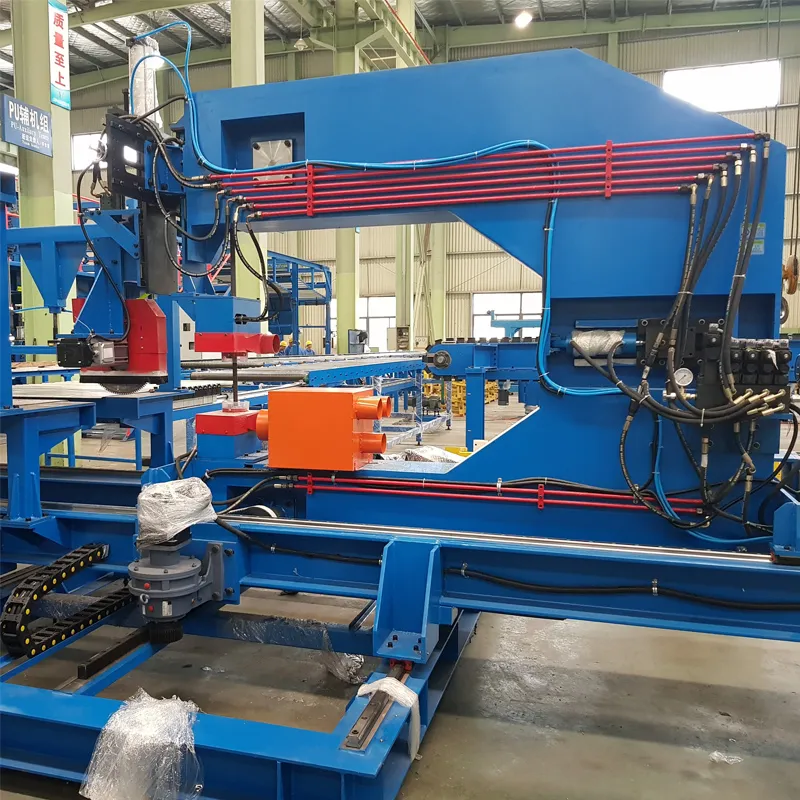
High-Pressure PU/PIR Foaming & Injection
This is the heart of the pu sandwich panel machine. A high-pressure foaming machine precisely mixes Polyol and Isocyanate (and a blowing agent like pentane) and injects the reactive liquid mixture onto the bottom steel sheet. The mixing ratio and injection volume are controlled by a PLC system to an accuracy of ±1%, ensuring consistent density and performance of the foam core.
Lamination & Curing in the Double Belt Conveyor
The injected foam and two steel sheets enter the 24-meter long double belt conveyor. This critical component applies uniform pressure and maintains a controlled temperature. Inside the conveyor, the liquid mixture expands and cures, bonding perfectly to the metal facings. The length of the conveyor (24m in this model) is crucial for allowing sufficient curing time at higher production speeds, ensuring a flat, stable final product.
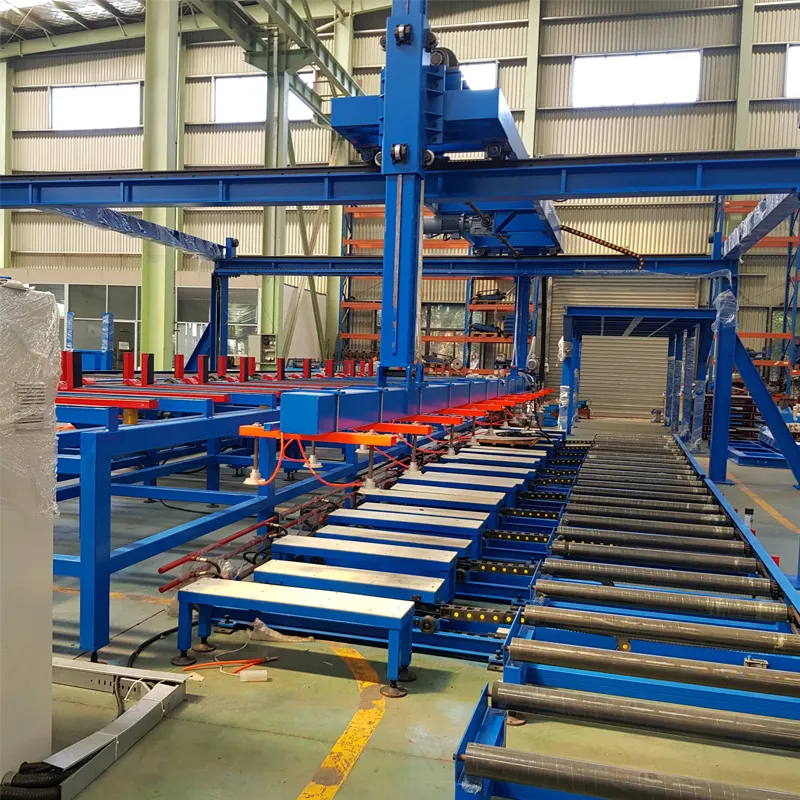
Precision Cutting
As the continuous panel exits the double belt, a high-speed, servo-driven band saw cutter cuts the panel to the pre-programmed length without stopping the line. This "flying cutter" ensures high productivity and clean, accurate cuts, with a length tolerance of less than ±2mm.
Cooling, Stacking & Packing
The freshly cut panels are transferred to a cooling conveyor to allow them to stabilize and reach ambient temperature. Finally, an automated or semi-automated stacking system arranges the panels, which are then wrapped for protection during transport and storage. This final stage is essential for maintaining product quality until it reaches the job site.
Technical Specifications: YOWIN 24m Double Conveyor PU Panel Production Line
Data-driven decisions are key. Here’s a detailed look at the technical specifications of our flagship pu panel production line, showcasing its superior capabilities. These parameters are designed to meet rigorous international standards, including ISO 9001:2015 and CE certification, ensuring reliability and performance.
| Parameter | Specification | Industry Significance |
|---|---|---|
| Product Name | Pu Sandwich Panel Production Line - 24m Double Conveyor | Identifies the core technology (double conveyor) and scale (24m). |
| Applicable Materials | PPGI, Al-Mg-Mn, Stainless Steel, Galvanized Steel | Versatility to produce panels for different corrosive environments and aesthetic needs. |
| Material Thickness | 0.4mm - 0.8mm | Covers the most common structural and non-structural application requirements. |
| Core Material | Polyurethane (PUR) / Polyisocyanurate (PIR) | Offers options for standard insulation (PUR) or enhanced fire resistance (PIR). |
| Panel Thickness | 30mm - 200mm (Wall), 30mm - 150mm (Roof) | Wide range allows for production of panels from standard cladding to deep-freeze cold storage. |
| Production Speed | 3 - 7 m/min (Adjustable) | High-speed capability ensures high throughput and lower cost-per-panel. |
| Double Belt Conveyor Length | 24 meters | Longer length guarantees complete foam curing at higher speeds, preventing delamination or warping. |
| Total Power | Approx. 150 KW | Reflects the line's robust capacity; energy-efficient motors are used to optimize operational cost. |
| Control System | Siemens/Mitsubishi PLC with Touch Screen Interface | Provides reliable, user-friendly control over all line parameters for consistent quality. |
| Cutting System | High-Speed Tracking Band Saw Cutter | Ensures continuous production with precise, burr-free cuts. |
| Compliance Standards | ISO 9001:2015, CE Marking | Demonstrates commitment to international quality and safety standards. |
Visualizing Performance: Data-Driven Insights
To better understand the capabilities of the YOWIN 24m Double Conveyor line, let's visualize its key performance indicators against industry benchmarks.
Key Performance Comparison
Bars represent YOWIN's 24m line performance, demonstrating leadership in speed, thickness capability, and precision.
Panel Application Distribution
- Cold Storage (40%)
- Industrial Walls (30%)
- Clean Rooms (20%)
- Architectural Facades (10%)
Typical market use for panels produced by a high-quality pu sandwich panel production line.
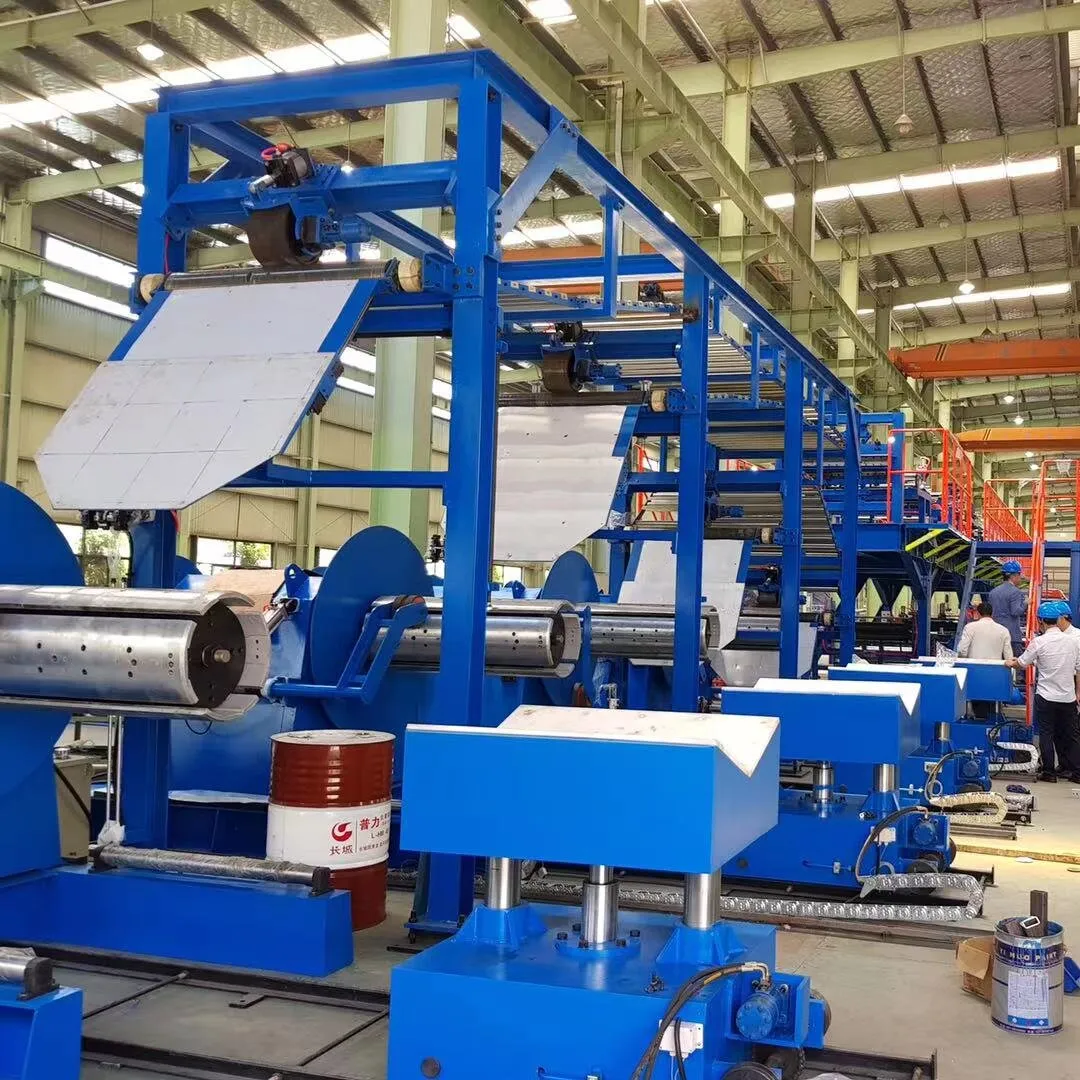
Core Technical Advantages: Why Choose a YOWIN PU Sandwich Panel Machine?
Choosing the right pu sandwich panel machine factory is a critical decision. YOWIN differentiates itself through a relentless focus on technology, reliability, and customer-centric solutions.
1. Superior Thermal Insulation (Low λ-value)
Our line's high-pressure foaming system and precise chemical ratio control produce a closed-cell foam structure with exceptional uniformity. This results in panels with a very low thermal conductivity (λ-value ≈ 0.022 W/m·K), significantly reducing energy costs for heating and cooling in buildings. This meets stringent energy codes like ASHRAE 90.1.
2. Enhanced Fire Performance with PIR
Our line is fully capable of processing Polyisocyanurate (PIR) foam, which offers superior fire resistance compared to standard PUR. Panels produced can achieve a B1/B-s1,d0 rating under the EN13501-1 standard, making them suitable for buildings with high fire safety requirements.
3. Unmatched Structural Integrity
The combination of a 24m double belt laminator for perfect adhesion, high-density foam core, and precision-profiled steel facings results in panels with excellent load-bearing capacity and spanning capabilities. This reduces the need for secondary steel structures, saving costs and construction time.
4. High-Level Automation and Reliability
Equipped with a Siemens PLC control system and components from world-renowned brands (Schneider, Omron), our pu panel production line ensures stable, continuous operation with minimal human intervention. This leads to higher uptime, consistent quality, and lower labor costs.
Manufacturer Comparison: Finding the Right PU Sandwich Panel Machine Factory
When you're in the market for a pu sandwich panel line, the manufacturer's capabilities are as important as the machine's specs. Here's how YOWIN stands against typical competitors.
| Feature / Service | YOWIN Machine | Typical Competitor A | Low-Cost Competitor B |
|---|---|---|---|
| Core Technology | Continuous 24m Double Belt Laminator | Continuous 18m Double Belt | Discontinuous Press / Short Laminator |
| Component Brands | Siemens, Schneider, Wanhua Chemical (Partners) | Mixed, often with reputable brands | Generic or local brands |
| Customization Level | Fully Customizable (Profiles, Width, Software) | Limited Customization | Standard Models Only |
| After-Sales Support | On-site Installation, 2-Year Warranty, 24/7 Online Support | 1-Year Warranty, Phone Support | Email Support, Parts Extra |
| Process Training | Comprehensive on-site operator and maintenance training | Basic operator training | Manuals only |
| Proven Experience | 15+ years in the industry, installations in 30+ countries | Established presence | New market entrant |
Tailored Solutions: Customizing Your PU Panel Production Line
One size does not fit all. A key advantage of partnering with a leading pu sandwich panel machine factory like YOWIN is the ability to customize the production line to meet your specific market demands and operational goals.
- Panel Profile Customization: We can design and manufacture roll forming stations for a wide variety of wall and roof panel profiles, including micro-rib, flat, and various trapezoidal roofing shapes.
- Width and Thickness Flexibility: The line can be engineered for different effective widths (e.g., 950mm, 1000mm, 1150mm) and a broad range of panel thicknesses to cater to diverse insulation requirements.
- Choice of Foaming System: Select between Pentane (cost-effective) and Cyclopentane (better insulation) blowing agent systems based on your environmental regulations and performance targets.
- Automation Level: From semi-automated stacking to fully robotic packing solutions, we can tailor the downstream equipment to match your desired level of automation and labor strategy.
- Software Integration: Our PLC control systems can be integrated with your factory's Manufacturing Execution System (MES) for seamless production planning and reporting.
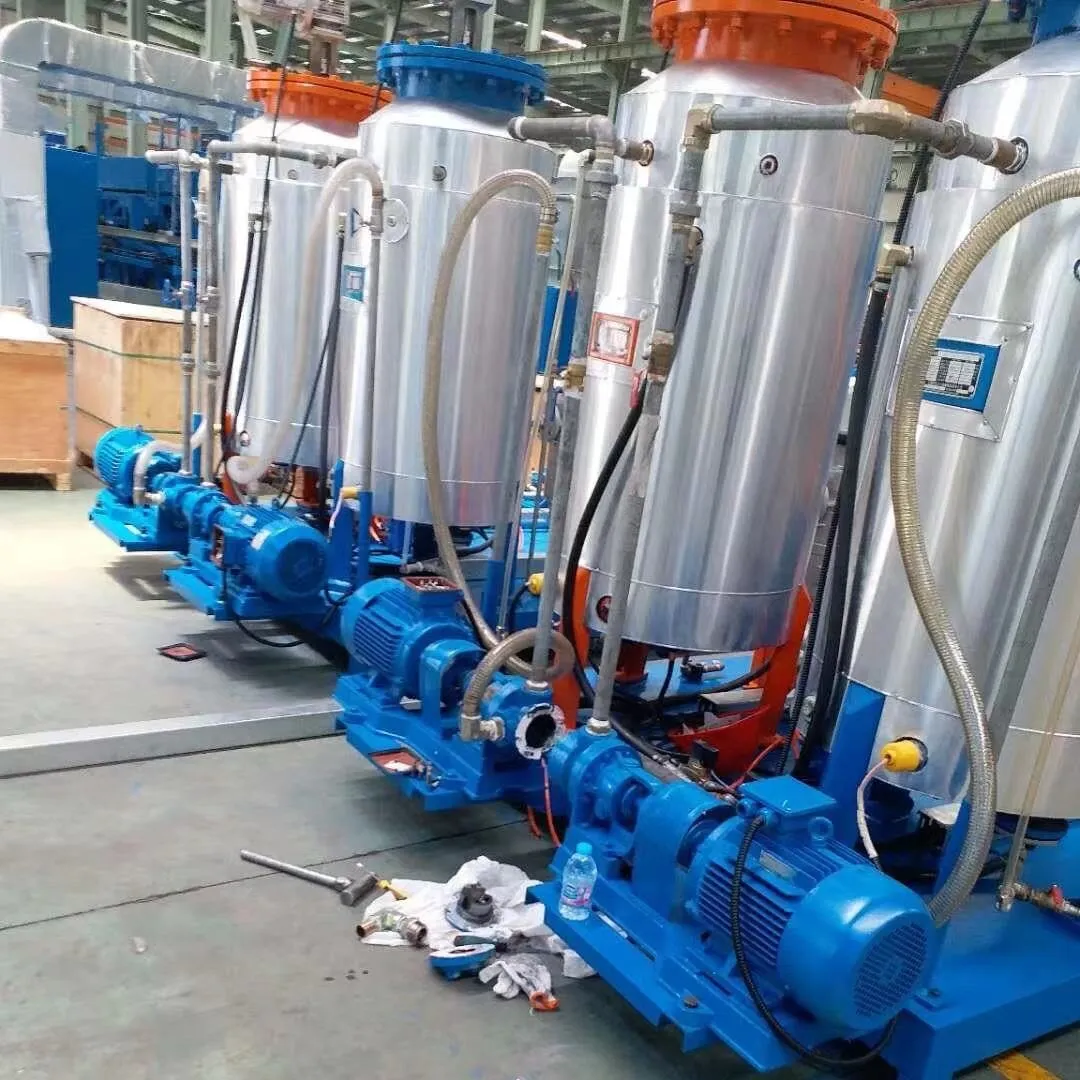
Application in Action: Real-World Success Stories
The true measure of a pu panel production line is the success of the products it creates. Our machinery is trusted by clients worldwide across various demanding sectors.
Case Study 1: Cold Chain Logistics Hub, Poland
Challenge: A major European logistics provider needed to construct a 50,000 sq. meter freezer and cooler facility with stringent temperature control requirements (-25°C) and high energy efficiency demands.
Solution: Our client, using a YOWIN pu sandwich panel line, produced 200mm thick PIR panels. The line's precision foaming and 24m double belt ensured excellent thermal performance and airtight joints.
Result: The facility surpassed its energy efficiency targets by 15%, leading to an estimated annual saving of €120,000 in electricity costs. The project was completed 2 months ahead of schedule due to the fast installation of the panels.
Case Study 2: Pharmaceutical Clean Room, India
Challenge: A pharmaceutical manufacturer required a Class 10,000 (ISO 7) clean room facility. The wall panels needed to have a non-porous, easy-to-clean surface and provide excellent insulation and fire safety.
Solution: A local panel manufacturer utilized our line to produce 100mm PUR panels with a food-grade stainless steel inner facing. The corona treatment system on our line was crucial for ensuring a perfect, long-lasting bond to the stainless steel.
Result: The panels met all FDA and GMP certification requirements. The client reported zero delamination or quality issues after 3 years of continuous operation, highlighting the reliability of the manufacturing process.
Frequently Asked Questions (FAQ)
PUR (Polyurethane) and PIR (Polyisocyanurate) are chemically similar but have a different molecular structure. The key difference lies in their fire performance. PIR has a higher proportion of Isocyanate and is reacted at higher temperatures, creating a more stable, ring-like chemical structure. This gives PIR significantly better fire resistance (e.g., B1 rating) and higher service temperature limits compared to PUR (typically B2/B3 rating). While PUR offers excellent insulation, PIR is the preferred choice for projects with stringent fire safety codes.
The line is designed to work with steel coils with a thickness range of 0.4mm to 0.8mm. The coil width will depend on the desired panel profile and effective width, but typically ranges from 1200mm to 1250mm. The recommended coating for exterior use is a high-quality PVDF or HDP paint for UV resistance and color retention. For the inner facing, a standard polyester (PE) coating is usually sufficient. For corrosive environments or food processing plants, stainless steel or coated aluminum coils can be used.
The double belt laminator (or conveyor) is arguably the most critical component for ensuring panel quality. Its functions are threefold: 1) Containment: It contains the expanding foam, forcing it to fill the cavity uniformly. 2) Pressure: It applies constant, even pressure, ensuring the foam adheres strongly to both steel facings without gaps. 3) Curing: It provides a heated, controlled environment for the chemical reaction to complete. A longer (24m) conveyor allows for higher production speeds because it gives the foam sufficient time to cure fully before exiting. A shorter conveyor would require a slower line speed to achieve the same quality, reducing productivity.
Dimensional accuracy is achieved through a combination of precision components and integrated control systems. It starts with the CNC-machined roll forming rollers that create exact profiles. The side guiding system within the double belt conveyor ensures a consistent panel width. Finally, the servo-driven "flying" band saw cutter is synchronized with the line speed via the PLC, ensuring that every panel is cut to the exact specified length with a tolerance of just ±2mm.
Regular maintenance is crucial for longevity and consistent performance. Key tasks include: daily cleaning of the foaming injection head to prevent clogging; weekly inspection and lubrication of all bearings, chains, and moving parts on the roll former and conveyors; monthly calibration of the foaming machine's mixing ratio; and regular inspection of the band saw blade. We provide a comprehensive maintenance schedule and training to ensure your team can effectively care for the machine.
This is not possible simultaneously. The line is equipped with one set of top and bottom roll forming cassettes to produce a specific profile. However, the design allows for interchangeable cassettes. To produce a different profile, the operating crew would need to stop the line and swap out the roll forming cassettes for a different set. A well-trained crew can typically complete this changeover in 2-4 hours, allowing for flexible production planning.
The ROI depends heavily on local market price for panels, raw material costs, and labor rates. However, due to the high efficiency and low waste of a continuous line, the ROI is generally very attractive. A typical calculation shows that running the line at 70% capacity on a single shift can lead to a payback period of 18-36 months. Factors that accelerate ROI include producing high-margin products like PIR fire-rated panels or cold storage panels, and maximizing the line's high-speed capabilities.
Our Commitment: Trust, Authority, and Partnership
Investing in industrial machinery is a long-term partnership. At YOWIN, we build trust through transparency, unparalleled expertise, and unwavering support. With over 15 years as a leading pu sandwich panel machine factory, we offer:
- Guaranteed Quality: All machines are CE certified and manufactured under an ISO 9001:2015 quality management system.
- Comprehensive Warranty: A standard 2-year warranty on all major components, with extended options available.
- Global Installation & Training: Our experienced engineers travel globally to oversee installation, commissioning, and provide in-depth training for your team.
- Lifetime Technical Support: We provide 24/7 online and phone support to troubleshoot issues and minimize downtime for the entire life of your pu panel production line.
- Delivery & Logistics: We offer a turnkey solution, managing everything from secure packaging and shipping to your port of choice, ensuring your investment arrives safely and on time. Typical delivery cycle is 90-120 days from order confirmation.
Further Reading & Industry References
To deepen your understanding of polyurethane technology and the sandwich panel market, we recommend the following external resources:
- Academic Insight: "Recent developments in the fire retardancy of rigid polyurethane and polyisocyanurate foams" - A comprehensive review available on ScienceDirect, exploring the chemistry behind PIR's fire performance. Read on ScienceDirect
- Industry Discussion Forum: A thread on Construction Specifier discussing the practical applications and benefits of insulated metal panels (IMPs), providing real-world user perspectives. Explore on Construction Specifier
- Market Analysis: Grand View Research provides detailed market size and trend analysis for the global sandwich panels market, offering valuable business intelligence. View Market Report
